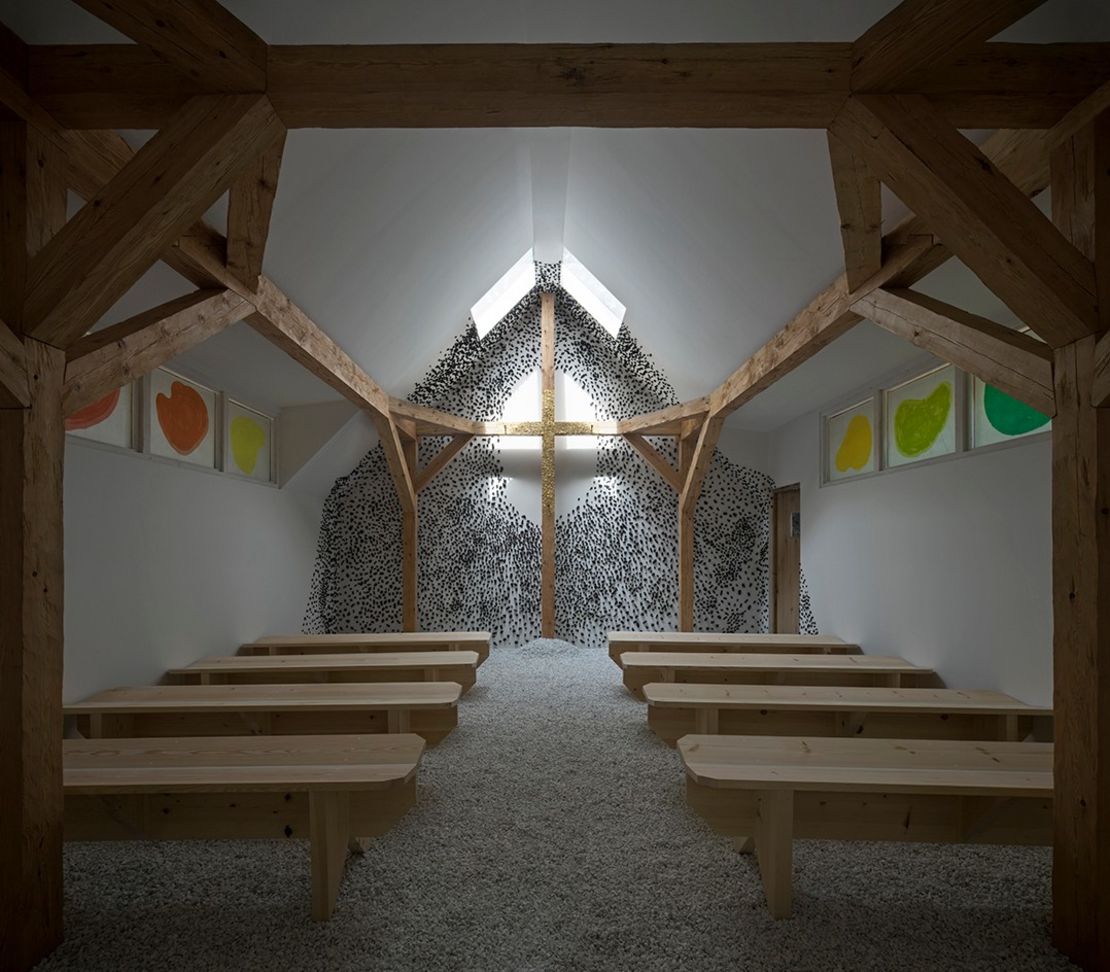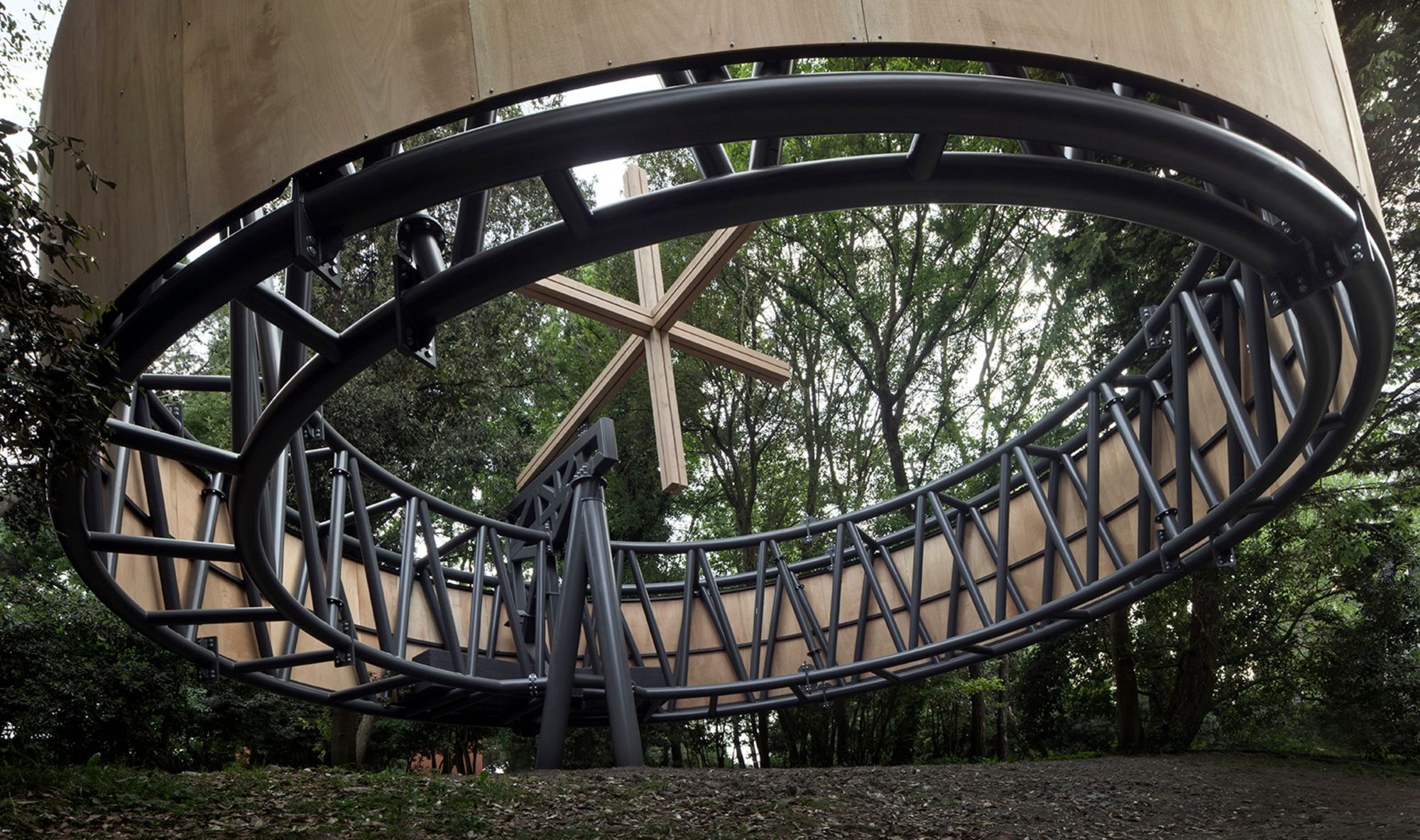The Vatican has made an unexpected foray into the secular culture scene, opening an ambitious exhibition at the Venice Architecture Biennale for the very first time.
As part of the Pavilion of the Holy See’s newly opened “Vatican Chapels” exhibition, curator and architecture historian Francesco Dal Co invited 10 architects, including Pritzker Prize laureates Norman Foster and Eduardo Souto de Moura (whose minimal stone chapel earned him the Golden Lion for best participant), to construct chapels in the wooded garden behind the 400-year-old Benedictine church on the island of San Giorgio Maggiore. The concept was inspired by the Woodland Chapel, designed by Erik Gunnar Asplund in 1920 for a Stockholm cemetery.
Inside the Holy See Pavilion at the 2018 Venice Biennale
“With this small masterpiece Asplund defined the chapel as a place of orientation, encounter and meditation, seemingly formed by chance or natural forces inside a vast forest, seen as the physical suggestion of the labyrinthine progress of life, the wandering of humankind as a prelude to the encounter,” Dal Co explained in a statement.
The selected collaborators include believers and nonbelievers alike. Francesco Cellini, for example, described himself as “a respectful architect who is not a believer” in a statement,” while Sean Godsell was educated by Jesuits, an experience he wrote was “an integral part of my childhood.”

The architects were given few limitations: the only requirements were that the space include both a lectern and an altar. Outside of that, they were free to design “without any reference to commonly recognized canons.” This open brief has resulted in an eclectic mix of structures, ranging from Brazilian architect Carla Juaçaba’s reflective stainless steel cross and accompanying benches (turned scalding under the Venetian sun), to a blackened wooden cabin masterminded by Terunobu Fujimori.
Inside New York architect Andrew Berman’s wood-and-polycarbonate design, there is only a solitary seat, positioned in front of a lectern and under a beam of light, suggesting, he said in a statement, that “it is a space for looking inward, under light amidst darkness,” more akin to a shed than a cathedral. He, like many others involved, preferred to use his chapel to explore the universal underlying themes of religion – contemplation, reflection, serenity – rather than create a deliberately Catholic space.
While this is the Vatican’s first time exhibiting at the Venice Architecture Biennale, the move is not wholly unprecedented. The city-state previously participated in the Venice Art Biennale, which is held during odd years, in 2013 and 2015.
In March, Cardinal Gianfranco Ravasi, president of the Pontifical Council for Culture and commissioner of the Holy See Pavilion, suggested that the Vatican’s presence at the Biennale could be seen as forwarding Pope Francis’ markedly liberal agenda.

In his initial announcement about the Holy See pavilion, Ravasi quoted the Pope’s “Evangelii Gaudium” exhortation directly: “We must be bold enough to discover new signs and new symbols, new flesh to embody and communicate the word, and different forms of beauty which are valued in different cultural settings, including those unconventional modes of beauty which may mean little to the evangelizers, yet prove particularly attractive for others.”
“Vatican Chapels” is on at the Holy See Pavilion of La Biennale di Venezia until Nov. 25, 2018.













